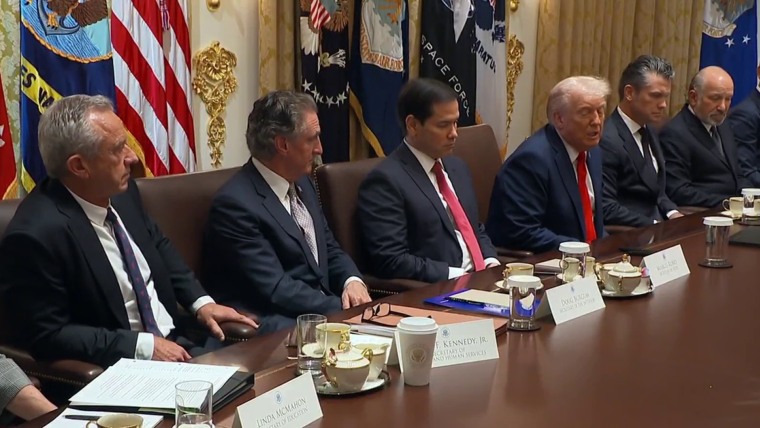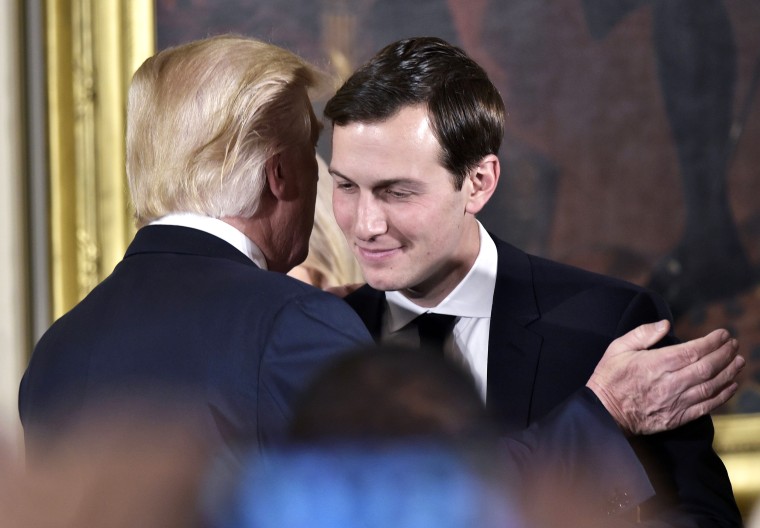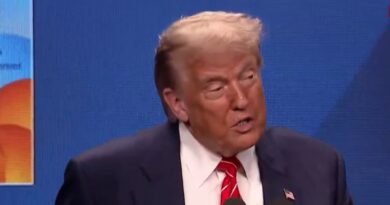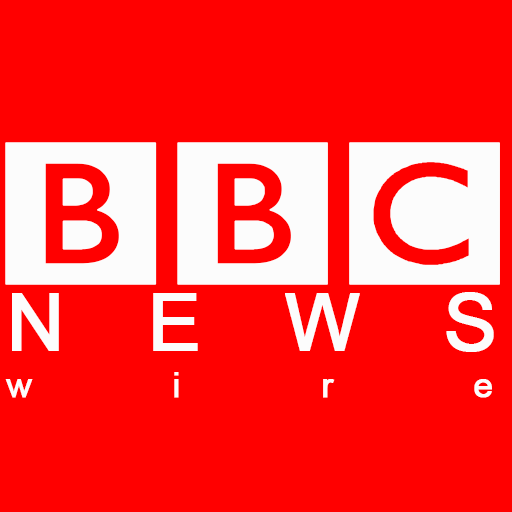How the Israel-Hamas ceasefire deal came together
President Donald Trump’s personal touch — both as a heavy hand and a gentle guide — played a pivotal role at key moments in the development of a Middle East peace deal that promises to bring an end to Israel’s two-year war in Gaza, current and former officials in the United States and other nations told NBC News.
Trump announced on Wednesday that the “first phase” of the plan to end the conflict in Gaza had been agreed to, with a pause in fighting and the release of Israeli hostages and Palestinian prisoners.
Trump called it “a great deal” in a brief interview with NBC News on Thursday morning. “Everybody is happy,” he said.
The deal accelerated over several crucial moments — Israel’s strike on Qatar, discussions on the sidelines of the recent United Nations General Assembly in New York City and Jared Kushner’s conversations with his father-in-law, these sources said.
Also helpful, though, was an old-fashioned deadline. In recent weeks, Trump told advisers he wanted to announce a deal by Oct. 7, the second anniversary of the Hamas terrorist attack on Israel that precipitated the war, according to two people familiar with his instructions.
The president, one of the people said, was fixated on the date both for its symbolic significance and because he saw it as a way to herald a new step forward in Israel’s relationship with Saudi Arabia when Crown Prince Mohammed bin Salman visits Washington next month.
This account of the Trump administration’s role in the ceasefire deal is based on interviews with a dozen sources in three countries.
As the war in Gaza ground on — with more than 67,000 dead, according to the Palestinian Health Ministry, declarations of famine and images of wounded children across social media — it threatened Trump’s vision for a more interconnected Middle East that he began to implement in his first term with the Abraham Accords, which established relationships between Israel and several Arab nations.
The war’s intensity also presented an opportunity for Trump to coalesce regional powers around a peace plan to disarm Hamas, preclude Israel from seizing the West Bank and provide for the redevelopment of Gaza.
Israel and Hamas agreed Wednesday to the first phase of that proposal — a ceasefire and an Israeli military pullback to a “yellow line” within Gaza that leaves more of the strip under the control of Palestinians. That is to be followed by Hamas’ returning as many as 20 Israeli hostages and the remains of as many as 28 hostages and Israel’s releasing nearly 2,000 Palestinian prisoners and the remains of 15 dead Gazans.
Trump was able to announce the pact just one day after his target.
To do that, Trump had to maintain the trust of Israel and of a series of Arab- and Muslim-majority nations that could influence Hamas and Palestinian civilians. At the same time, he had to apply pressure. His ability to walk that tightrope was tested repeatedly.
And, at times, the darkest hours yielded the biggest breakthroughs.
Qatar strikes
After months of negotiations with no result, a turning point came in September in the form of a surprise attack.
Israeli forces launched airstrikes on the Qatari capital, Doha, in an attempt to kill the leaders of Hamas. Six people were killed, including a member of Qatar’s internal security force.
Over the course of the war, Israel has struck in Iran, Lebanon, Syria and Yemen, in addition to Gaza.
But this was different. Qatar is a U.S. ally that hosts a strategic air base with 10,000 American troops. Trump and his team had come to view the Persian Gulf nation as a trusted partner in the negotiations between Israel and Hamas. The parents of an Israeli hostage had been in Doha that very morning, meeting Qatari Prime Minister Sheikh Mohammed bin Abdulrahman bin Jassim Al-Thani.

The bombing blindsided and angered the White House, as well as the Arab world.
Asked about the strikes at the time, Trump told reporters: “I was very unhappy about it. Very unhappy about every aspect.”
But instead of killing the prospect of a deal, the Israeli attack prompted Trump and his team to ratchet up pressure on Israeli Prime Minister Benjamin Netanyahu to bring the war to an end.
“It was the moment that Trump said, ‘Enough,’” said a former Israeli official, adding: “This deal, almost identical, has been on the table for over a year now. Netanyahu didn’t want to do it, but Trump left him no choice.”
“Both Netanyahu and Hamas tried to say ‘yes, but’ to stall, but Trump decided to hear only ‘yes’ and pushed them into the corner,” the former official said.
Shortly after the strikes, Trump issued a warning to Israel: He would not support the annexation of the West Bank, as some far-right members of Netanyahu’s Cabinet had proposed.
The Americans, the Qataris and other Arab governments saw the surprise strikes as an opportunity to exert leverage, according to an Arab official and former Israeli officials with knowledge of the diplomatic talks.
“It was a catalyst to bring pressure on the Israeli government, which had been the main obstacle to a deal,” the Arab official said.
U.N. General Assembly sidelines
Weeks after the strikes on Doha, the U.N. General Assembly met along the bank of the East River in New York City.
It was on the sidelines — where, historically, deals are often solidified with face-to-face interactions and handshakes — that the discussions “really took a turn,” Secretary of State Marco Rubio said Thursday during a Cabinet meeting at the White House.
Trump convened a meeting at the General Assembly with Arab- and Muslim-majority nations to sell his 20-point peace plan. Rubio said that is where Trump “created this coalition” before he presented the proposal to Netanyahu at the White House at the end of last month.
Crucially, during that visit, Trump persuaded Netanyahu to call Al-Thani, the Qatari prime minister, to apologize for the Israeli strikes in Qatar. That allowed Qatar to remain engaged as a key intermediary in peace talks.
“It is my understanding that the Qatari government viewed the apology as a way to move forward, and it saw its role, that it had invested in for quite a long time, as still vital to achieving a ceasefire and hopefully peace in the future,” Nawaf Al-Thani, a former Qatari defense attaché to the United States, told NBC News.
Trump’s handling of that episode was reminiscent for many observers of the way he reacted to Israel’s and Iran’s striking each other during a ceasefire agreement following American bombing raids on Iranian nuclear facilities in June.
“We basically have two countries that have been fighting so long and so hard that they don’t know what the f— they’re doing,” Trump, clearly frustrated, said at the time. His rebuke of Israel, along with Iran, reassured Arab countries with ties to Shia-majority Iran. In that way, a former senior White House official said, Trump’s messages to Israel after its strikes in Iran and in Qatar were similar.
“Both showed the president’s commitment to Israel, but also his commitment to the Arab countries,” the former official said.
Seeing the United States pushing Israel over the strike in Doha helped persuade Qatar, Turkey and other Arab governments to press Hamas, making it clear that the time for delays and foot-dragging was over, the officials said.
As the negotiations advanced, both the U.S. and Arab negotiators chose to convey a united and optimistic front, placing Netanyahu at risk of potentially insulting Trump if he questioned the 20-point proposal Trump put on the table, the former Israeli official said.
“The Trump people and Arab world just briefed total confidence and optimism before anything was finalized to make it seem like a done deal, which made saying ‘no’ a public affront to Trump, and Netanyahu can’t do that,” the former official said. “It was a show of very effective statecraft and use of leverage.”
Kushner’s role
During Trump’s first term, Kushner, the president’s son-in-law, became his chief envoy to the Middle East. There he was delivering a speech at the opening of the U.S. Embassy in Jerusalem. There he was building relationships with Arab leaders, focusing on economic relations.
Years later, Kushner became deeply involved in the negotiations between Israel and Hamas. He emerged, former Israeli officials said, because he carries important influence with regional governments and the president.
“Kushner was the architect,” a former Israeli official said.
Kushner was able to convey to Trump that the conflict in Gaza threatened the future of his biggest diplomatic success the last time he was in office — the Abraham Accords.
That deal produced peace agreements between Israel and the United Arab Emirates, Bahrain and Morocco. Trump has aimed to extend it to normalize relations between Saudi Arabia and Israel.

“The entire legacy was in jeopardy,” the former Israeli official said.
Kushner and Trump’s special envoy to the Middle East, Steve Witkoff, traveled to Egypt on Tuesday to hammer out details of the deal, according to senior U.S. officials.
They went over various aspects of the proposal, including how Israeli military forces would be redeployed and the order of hostage and prisoner releases, the officials said, with one adding that an important feature of their work was the decision to “separate the peace deal into two clear phases.” That allowed for an agreement on the exchange of people, while the deal’s other points are negotiated in a second phase.
The U.S. negotiators called Trump on Wednesday evening to get his final guidance before he announced that a deal was in place, the officials said. Israel’s government approved the exchange Thursday evening.
“It came together quick in a good way,” Witkoff told NBC News in a brief telephone interview Thursday morning as he waited to board a flight to Israel.
Kushner and Witkoff had about “five hours of sleep in the last three days,” senior U.S. officials said.
American negotiators expect the next phase to be “almost a permanent ceasefire until all the other issues we have to deal with are negotiated and considered,” one of the officials said, pointing to outstanding topics as thorny as how Gaza will be governed.
U.S. officials cautioned Thursday that there is still a lot of work to do to ensure the ceasefire holds and the rest of the plans can be finalized and implemented.
“This is a very delicate time,” one of them said.
Trump said he plans to travel to Egypt to put his signature on the Middle East agreement in the coming days.
And the U.S. military is preparing options to deploy as many as 200 U.S. troops to Israel to support the International Stabilization Force for the long-term internal security solution for Gaza and to support the flow of humanitarian aid and security assistance into Gaza, according to two U.S. officials familiar with the planning.
“They will not be in Gaza. No U.S. boots on the ground in Gaza,” one of the officials said.
The effort will be called the Civil-Military Coordination Cell, and U.S. troops could begin arriving in Israel immediately, the officials said.
In addition to supporting moving aid and assistance into Gaza, they are expected to support the deconfliction mechanism between the two sides — basically making sure that both sides are upholding their part of the security agreements.
“I think right now,” a senior U.S. official said, “we’re just focused on making sure any gaps are patched up in the agreement.”
Trump allies say the agreement between Israel and Hamas, forged under immense pressure on both sides — including Trump’s broad support for Israel’s war in Gaza, the limits he placed on Netanyahu and a threat to let Israel destroy Hamas if it did not agree to the pact — is a testament to the validity of his peace-through-strength approach to foreign policy.
“He understands that sometimes you have to use force to set the structure for peace,” former House Speaker Newt Gingrich, R-Ga., who is close to Trump, said in an interview last week.





